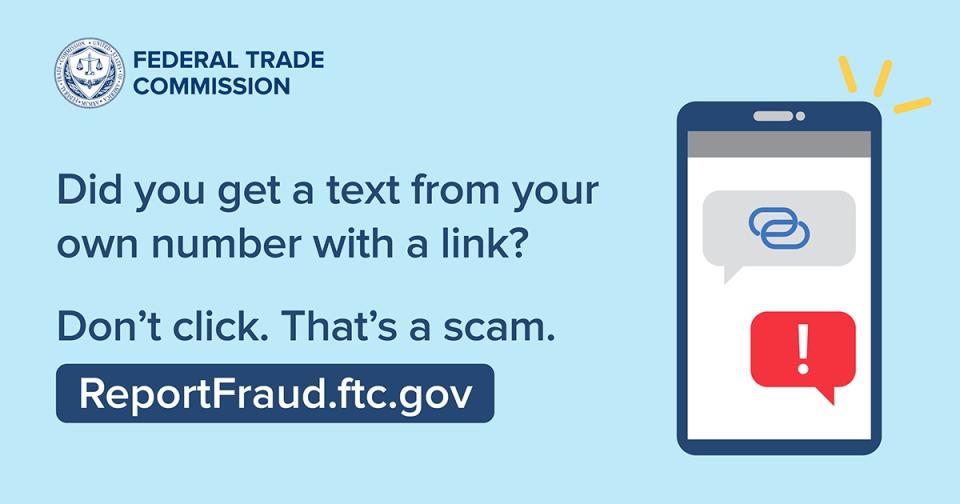Scammers are always thinking up ways to put a new spin on their criminal tricks. This time, they’re sending spam texts to you — from your own phone number. They’ve changed (spoofed) the caller ID to look like they’re messaging you from your number, but the shock of getting a text from yourself is bound to get your attention — which is what they’re after. If you get a text from your own number, it’s a scam.
How does the scam work? In one version, you’ll get a text thanking you for paying your bill with an offer to get a gift — just click on a link. Don’t click. Clicking could expose you to scams, download malware, or get your phone number added to lists that are then sold to other scammers.
Want to filter unwanted text messages or stop them before they reach you? Here are some options:
| On your phone | Your phone may have an option to filter and block spam or messages from unknown senders. Here’s how to filter and block messages on an iPhone and how to block a phone number on an Android phone. |
| Through your wireless provider | Your wireless provider may have a tool or service that lets you block calls and text messages. Check out ctia.org, a website from the wireless industry, to learn about options from different providers. |
| With a call-blocking app | Some call-blocking apps also let you block unwanted text messages. Go to ctia.org for a list of call-blocking apps for Android, BlackBerry, Apple, and Windows phones.
You can also search for apps online. Check out the features, user ratings, and expert reviews. |
Did you get an unwanted text message? There are three ways to report it:
- Report it on the messaging app you use. Look for the option to report junk or spam.
- Copy the message and forward it to 7726 (SPAM).
- Report it to the Federal Trade Commission at ReportFraud.ftc.gov
By Andrew Rayo, Federal Trade Commission


No comments yet.